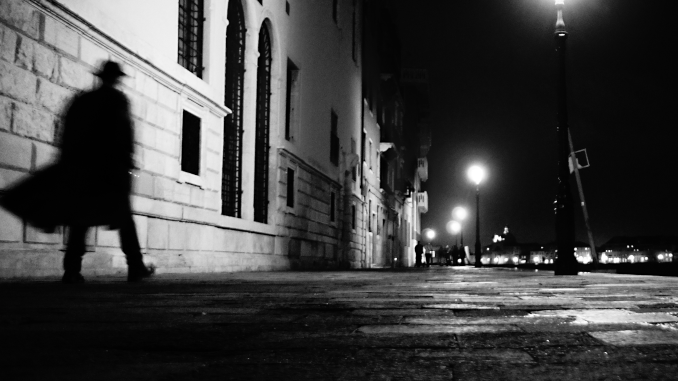
Today’s film is 1945’s “Hangover Square,” starring Laird Cregar (George Harvey Bone), Linda Darnell (Netta Longdon), George Sanders (Dr. Allan Middleton), Glenn Langan (Eddie Carstairs), Faye Marlowe (Barbara Chapman), Alan Napier (Sir Henry Chapman), and Michael Dyne (Mickey — uncredited). Directed by John Brahm; cinematography by Joseph LaShelle. Produced by Robert Bassier for 20th Century Fox. Music by Bernard Hermann. Screenplay by Barré Lyndon, based on the 1941 novel “Hangover Square,” by Patrick Hamilton.
This gothic noir flick had a fairly big budget, since it’s a major studio effort. And while the studio was grooming Cregar to be a leading man, the audience didn’t flock to see this film, with a domestic take of far less than the budget.
If you’d like to watch the movie, here it is:
The basic plot is familiar to film noir afficionados: a man falls for a conniving woman who’s more than happy to use him and then toss him aside once she’s moved on to the next man up the ladder of success. What distinguishes this film is the soundtrack, with music by Bernard Hermann, who was brought onto the project very early on, rather than scoring the movie once it was in the can (as is usual). The music is integral to the plot, woven throughout. In this case, the conniving woman (Netta) wields her feminine wiles to wheedle George into composing little ditties for her to perform, wasting his talent on songs which are quickly forgotten by bored audiences.
The film opens with George in a fugue state, attacking and murdering an antiques dealer in his shop. Before he leaves, the shop is set in flames. George manages to escape the scene unnoticed, making his way back to his basement flat, where his girlfriend Barbara and her father are waiting. Sir Henry encourages George to finish the concerto he’s currently working on, to be premiered at one of his musical evenings in December (about five months away). Once Dad has left, Barbara and George discuss the fact that he’s had another of his spells, and this time, it’s lasted longer than one ever has–he’s lost an entire day. He decides he’ll see Dr. Middleton, who’s an expert in these kinds of cases. George tells the doctor he goes into these fugue states when he’s feeling very stressed and overworked and then hears a discordant sound.
Later George sees Netta perform at a pub and is entranced by her. He plays a piece of his music for her. Her pianist for the evening, Mickey, starts putting lyrics to the tune, and Netta has her first song from George. Mickey sells the tune and splits the money with Netta.
Even though Netta finds George boring and a bit repulsive, she continues to play up to him in the hopes he’ll write more songs for her that will get her gigs at better venues.
From there, the story unfolds as you might expect, with a couple of unexpected twists along the way.
Near the end of the film, Dr. Middleton (here seen only as a silhouette) confronts George. I really loved this shot:

My only nit is that there’s never any motive given for George to kill the antiques dealer. What was their connection? We have no idea. Other than that, the film is solidly plotted, well performed by the cast, with competent direction. But what really makes this effort shine is the music, filled throughout with snippets from “Concerto Macabre,” an original composition created for the film by Hermann. The music is so compelling, it thrilled and obsessed a young music student who taught himself to play it by ear. That student later grew up to be a famous composer himself: Stephen Sondheim. 🙂
I give this one 4.75 out of 5 unfiltered cigarette puffs.
Next week is “Kiss the Blood off My Hands.” Can you get a more noir title than that? I doubt it…
